The First Photograph of Earth Taken from Space
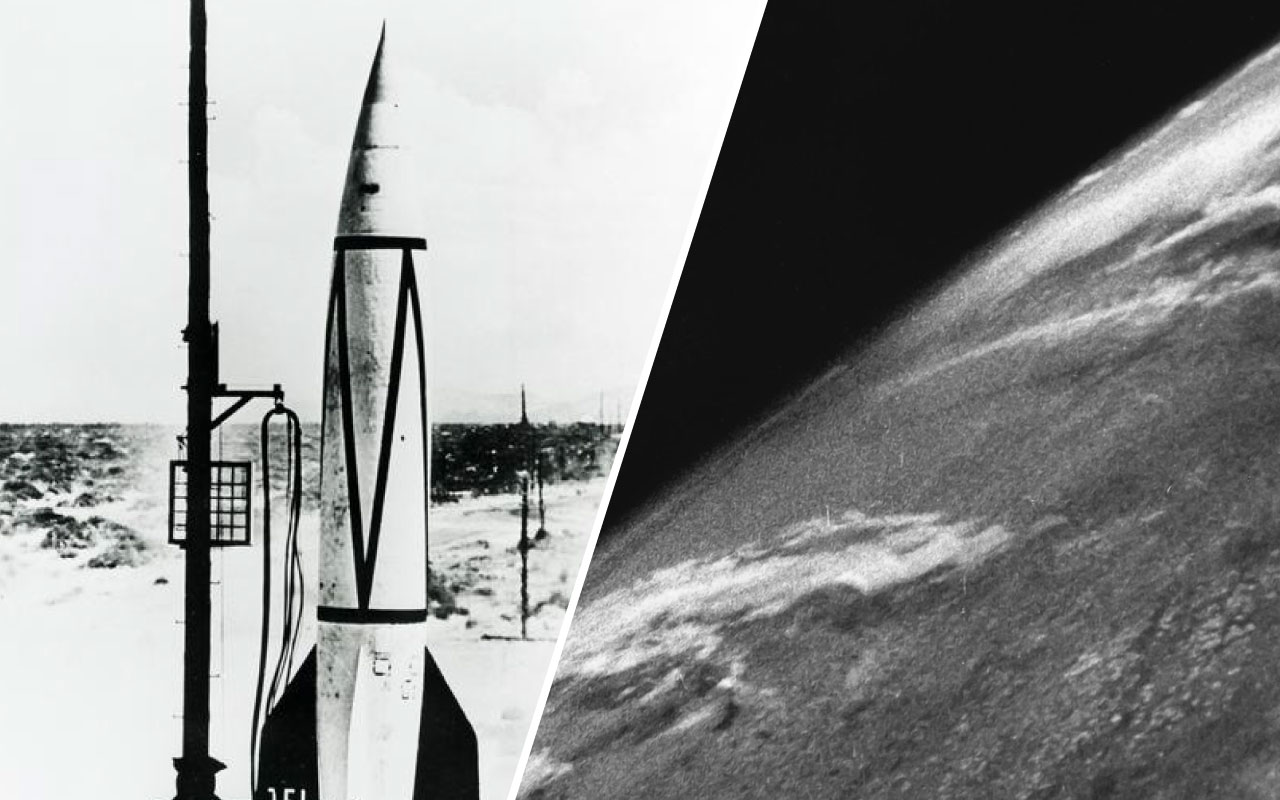
The year was 1946, and the world was still reeling from the aftermath of World War II. Amidst this turbulent era, a remarkable event took place at the White Sands Missile Range, forever changing our perspective of Earth and paving the way for the future of space exploration.
On October 24, 1946, a V-2 no.13 missile was launched into the skies, but it carried more than just ambition and scientific curiosity; it held a 35-millimeter motion picture camera that would capture the first-ever photograph of Earth taken from space.
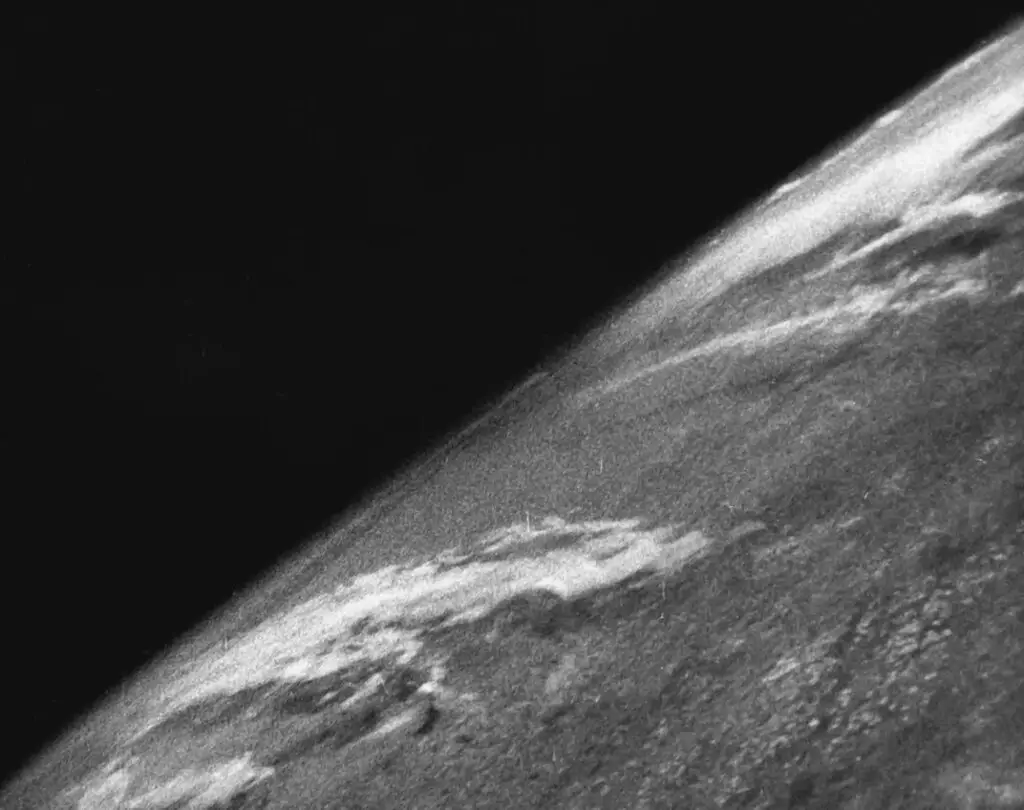
White Sands Missile Range/Applied Physics Laboratory
A Vision of the Cosmos: The Birth of Space Photography
As the V-2 missile soared into the heavens, it brought with it a sense of wonder and excitement. The notion of capturing a glimpse of Earth from the depths of space was a daring and audacious concept.
The mission aimed to push the boundaries of human understanding and provide a unique perspective on our home planet.
Reaching New Heights: The Precarious Journey to Space
The journey to space was fraught with challenges and uncertainties. The V-2 missile traveled at incredible speeds, and the camera had to withstand the harsh conditions of the upper atmosphere.
Yet, in the midst of chaos and uncertainty, the camera fulfilled its mission, capturing images of Earth that had never been seen before.
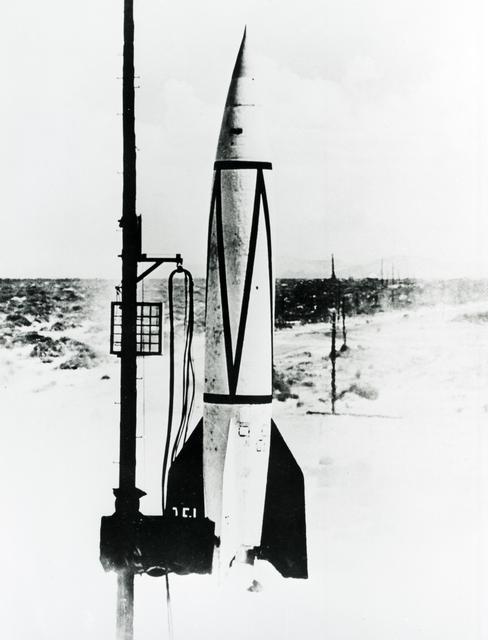
The Cosmic Snapshot: Humanity’s First Glimpse of Earth from Space
As the V-2 missile reached an altitude of 65 miles, just beyond the recognized boundary of outer space, the camera sprung into action.
In that fleeting moment, the lens captured the breathtaking beauty of our planet from a celestial vantage point. The image showcased Earth as a fragile blue orb, suspended in the vastness of the cosmos.
A Paradigm Shift: Seeing Earth as a Whole
The photograph of Earth from space was more than just a captivating image; it was a paradigm shift in our perception of the planet. For the first time in history, humanity could witness the Earth as a unified entity, devoid of the political boundaries that often divide us.
The sight of our planet from space evoked a profound sense of unity and a recognition of the fragility of our home in the vast expanse of the universe.
The Birth of Space Exploration: A Catalyst for Scientific Discovery
The first photograph of Earth from space sparked an insatiable appetite for space exploration. It ignited the imagination of scientists, researchers, and visionaries who saw the boundless potential for understanding the cosmos and our place within it.
The mission laid the groundwork for future space endeavors, shaping the trajectory of human exploration beyond the confines of our planet.
From Film to Digital: Evolution of Space Photography
The first photograph of Earth from space marked a significant milestone, but it was only the beginning. As technology advanced, so did space photography.
From film-based cameras to sophisticated digital imaging sensors, the tools used to capture cosmic snapshots have evolved, enabling more detailed and stunning images of our planet and the universe.
A Legacy of Inspiration: Earthrise and Beyond
Decades after that historic snapshot, the spirit of capturing Earth’s beauty from space lives on. One of the most iconic images in history, known as “Earthrise,” was taken during the Apollo 8 mission in 1968.
This photograph, showing the Earth rising above the lunar horizon, further emphasized the fragility and uniqueness of our home planet.
A Glimpse into Our Future: Space Exploration Today
Today, space exploration has become a collaborative endeavor involving numerous countries and space agencies.
Satellites and spacecraft orbiting Earth provide a constant stream of images and data that enhance our understanding of our planet and the universe.
A Powerful Perspective: Appreciating Earth’s Delicate Balance
The first photograph of Earth from space is a reminder of the delicate balance that sustains life on our planet.
It underscores the importance of environmental consciousness and responsible stewardship of Earth’s resources.
A Never-Ending Journey: The Quest for Knowledge Continues
The first photograph of Earth taken from space was more than just a snapshot; it was a profound testament to human curiosity and ingenuity.
It exemplifies our ceaseless pursuit of knowledge, the unyielding desire to explore the unknown, and the boundless potential for scientific discovery that lies ahead.
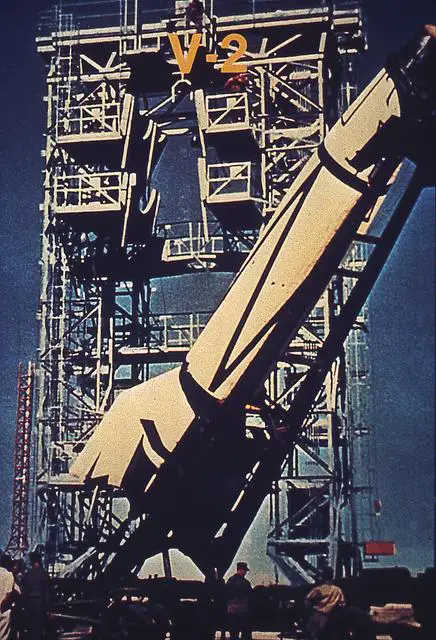
Did you know?
On April 12, 1961, Soviet astronaut Yuri Gagarin orbited the Earth in a Vostok spacecraft, making him the first human in space. After that, there are still a lot of explorations to be done, and there are still a lot of questions about space to be answered.
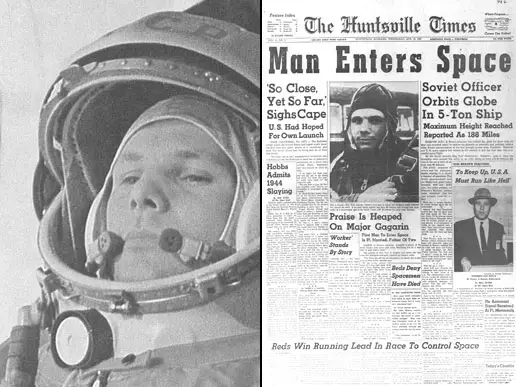
Conclusion
The first photograph of Earth taken from space marked a momentous milestone in human history. It provided a profound and transformative perspective on our planet, uniting us in our shared home amidst the vastness of the cosmos.
From that historic day in 1946, space exploration has continued to inspire and captivate us, fueling a never-ending journey of discovery and understanding.
As we gaze at the cosmic snapshot, let us remember that our planet is both fragile and resilient, and it is our responsibility to cherish and protect the beautiful blue orb we call home.
Frequently Asked Questions (FAQs)
Who captured the first photograph of Earth from space?
The first photograph of Earth from space was captured on October 24, 1946, by a 35-millimeter motion picture camera attached to a V-2 no.13 missile launched from the White Sands Missile Range.
How high was the V-2 missile when it captured the photograph?
The V-2 missile carrying the camera reached an altitude of 65 miles, which is just beyond the recognized boundary of outer space.
What significance did the first photograph of Earth from space hold?
The first photograph of Earth from space was a historic milestone that provided humanity with a unique and transformative perspective of our planet as a whole, inspiring future space exploration and fostering environmental consciousness.
How did space photography evolve after the first photograph?
Following the first photograph, space photography evolved significantly. Advancements in technology led to the transition from film-based cameras to sophisticated digital imaging sensors, enabling more detailed and stunning images of Earth and the universe.
What other iconic images resulted from space exploration after the first photograph?
One of the most iconic images after the first photograph is “Earthrise,” captured during the Apollo 8 mission in 1968. It shows the Earth rising above the lunar horizon, emphasizing the fragility and uniqueness of our home planet.
Must READ!
The Clearest Picture of the Moon: Captured by a 16-year Old Boy Stitching over 50,000 Photos Together. SEE IT HERE.
